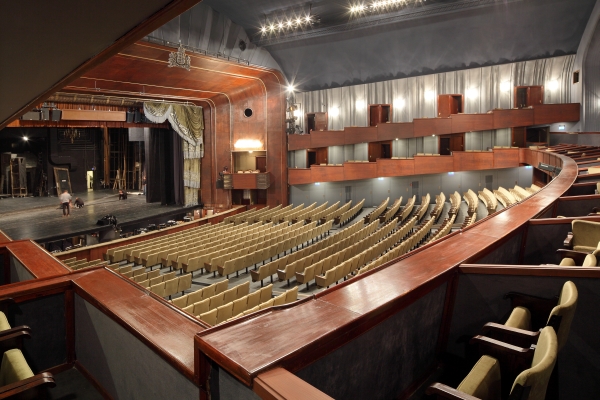Hungarian State Opera, Erkel Theatre
3/5
West Side Story is dominated by two themes, both of them as recognisable and as powerful now as they were in 1957: love, and racial tensions. Racial tensions are particularly salient in the wake of the Syrian Refugees crisis, so what would be the reaction to such a politically charged musical, at a theatre less than ten minutes' walk from the very epicentre of the crisis?
 |
| Keleti Palyaudvar, one of Budapest's main railway stations: left, on 1st September 2015, right, on 26th September 2015. Left photo from the Evening Standard. |
The Erkel Theatre is unquestionably ugly. By contrast with the State Opera House, which is an ornate and elaborate declaration of the power and grandeur of the 19th-century Austro-Hungarian Empire, the Erkel Theatre is a shell of wood painted in brutalist colours. This doesn't matter too much during a musical, since your attention is on the stage, but it makes a bad first impression.
The scenery was similarly sparsely decorated. There was no particular background; merely a set of blocks which were used interchangeably as balconies and as platforms to separate the singers from the dancers, a table, and a rather grubby mirror which was lowered over the stage from time to time. The director alone knows why, since the aforementioned grubbiness of the mirror made it near-useless as a reflective surface.
To top off the soviet nature of the stage, the screen used to display Hungarian translations of the songs was a petty little thing, a board with dim-orange lights that would have been much more appropriately placed at a bus stop.
 |
| From some Hungarian website or other. The blue stuff is - I think - painted wood, though going by appearance it may as well be concrete. |
 |
| Sergeant Krupke patrols in front of the Jets. This, and all following photos, are taken from the official website. |
Unfortunately the size of the theatre meant that, at least for those of us sitting near the back, the key advantage of live orchestral music was missing: one could not pick out the different parts and explore the subtleties, since the sound of the orchestra came as a single impression rather than a melange of different ones.
It's sometimes said that people lose their accents when singing, and had you told me that a couple of weeks ago I might have believed you. The actors on stage didn't; not one of them, for example, could pronounce the letter w. This wasn't too much of a problem during the solos, but it did sometimes impede clarity when there were groups singing.
While none of the singers could have been confused for a native speaker of English, the people playing Tony and Anita were at least fluent enough to emphasise certain words above others, and to do so intelligently - to inject that large amount of communication which comes from things other than our exact words and body language. The rendition of "A boy like that" was genuinely the finest I heard, beating even that of the seminal West Side Story album released last year by Michael Tilson-Thomas and the San Fransisco Symphony.
Perhaps it's unfair of me to criticise their accents - after all, singing in a Hungarian accent may well have been more clear for most of the audience (though not for me personally). What I do feel ought to be criticised is the gross overuse of vibrato, which seemed to pop up in every note which could possibly sustain it. Vibrato sounds silly when used to this extent, and ought to be saved for those notes which really must be held on to.
The dancing was another thing that, not being qualified to offer even basic commentary on, I shall have to report as merely "fine". It was, though, rather odd to see Tony dancing with Bernardo and Riff even after the latter two had been fatally stabbed.
 |
| Tony (centre) stabs Bernardo (right), to avenge Riff (left). |


No comments:
Post a Comment